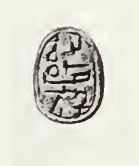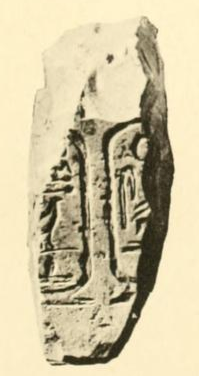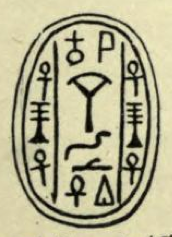
Smenkhkare Imyremeshaw was a minor king of the early 13th Dynasty during the late Middle Kingdom. He apparently had a short reign and is mainly attested in the Memphis-Faiyum region in Egypt.

Sehetepkare Intef was the a minor king of the early 13th Dynasty during the late Middle Kingdom.

Merhotepre Sobekhotep was an Egyptian king of the late 13th Dynasty during the Second Intermediate Period.

Sekhemre Wadjkhaw Sobekemsaf I was a pharaoh of Egypt during the 17th Dynasty in the Second Intermediate Period.

Sekhemre-Heruhirmaat Intef was an ancient Egyptian king of the Seventeenth Dynasty of Egypt, who ruled during the Second Intermediate Period, when Egypt was divided between the Theban-based 17th Dynasty in Upper Egypt and the Hyksos 15th Dynasty who controlled Lower and part of Middle Egypt.

'Ammu Aahotepre was a pharaoh of the 14th Dynasty who ruled over parts of Egypt during the Second Intermediate Period. His reign is believed to have lasted about 15 years, from 1760 BC until 1745 BC.
Sankhenre Sewadjtu was the thirty-fourth pharaoh of the Thirteenth Dynasty of Egypt during the Second Intermediate Period. Sewadjtu reigned from Memphis, starting in 1675 BC and for a period of 3 years and 2 to 4 months.

Sewadjare Mentuhotep is a poorly attested Egyptian pharaoh of the late 13th Dynasty, who reigned for a short time c. 1655 BC during the Second Intermediate Period. The Egyptologists Kim Ryholt and Darrell Baker respectively believe that he was the fiftieth and forty-ninth king of the dynasty, thereby making him Mentuhotep V. Thus, Sewadjare Mentuhotep most likely reigned shortly before the arrival of Hyksos over the Memphite region and concurrently with the last rulers of the 14th Dynasty.

Sekhemre Seusertawy Sobekhotep VIII was possibly the third king of the 16th Dynasty of Egypt reigning over the Theban region in Upper Egypt during the Second Intermediate Period. Alternatively, he may be a ruler of the 13th or 17th Dynasty. If he was a king of the 16th Dynasty, Sobekhotep VIII would be credited 16 years of reign by the Turin canon, starting c. 1650 BC, at the time of the Hyksos invasion of Egypt.

Seankhibre Ameny Antef Amenemhat VI was an Egyptian pharaoh of the early Thirteenth Dynasty.

Sekhemre Sementawy Djehuty was a minor king reigning over parts of Upper Egypt during the Second Intermediate Period.

Khahotepre Sobekhotep VI was an Egyptian king of the late 13th Dynasty during the Second Intermediate Period.

Djedankhre Montemsaf was a Theban king of the 16th Dynasty based in Upper Egypt during the Second Intermediate Period c. 1590 BC. As such, he would have ruled concurrently with the 15th Dynasty, which controlled Lower and Middle Egypt.
Senusret IV Seneferibre was an ancient Egyptian Theban king during the late Second Intermediate Period that is attested only through finds from Upper Egypt. The chronological position of Senusret IV is unclear and even the dynasty to which he belongs is debated.

Seankhenre Mentuhotepi was an ancient Egyptian pharaoh during the fragmented Second Intermediate Period. According to egyptologists Kim Ryholt and Darrell Baker, he was the fifth king of the 16th Dynasty reigning over the Theban region in Upper Egypt. Alternatively, Jürgen von Beckerath sees him as the fifth king of the 17th Dynasty.

Mersekhemre Ined was a pharaoh of the late 13th Dynasty, possibly the thirty-fifth king of this dynasty. As such he would have reigned from Memphis over Middle and Upper Egypt for a short time either during the early or mid-17th century, from 1672 until 1669 BC or from 1651 until 1648 BC. He may be the same king as Mersekhemre Neferhotep II.

Mershepsesre Ini was a pharaoh of the late 13th Dynasty, possibly the forty-sixth king of this dynasty. He reigned over Upper Egypt during the mid-17th century BC.

Nerikare was an Egyptian pharaoh of the 13th Dynasty during the Second Intermediate Period.

Wazad was an Egyptian pharaoh during the Second Intermediate Period. According to the Egyptologists Kim Ryholt and Darrell Baker, Wazad was a member of the 14th Dynasty of Egypt reigning c. 1700 BC. As a king of the 14th Dynasty, he would have reigned from Avaris over the eastern Nile Delta and possibly over the western Delta as well. The Memphis-based 13th Dynasty reigned over Middle and Upper Egypt at the same time. Alternatively, according to Jürgen von Beckerath and Wolfgang Helck, Wazad was a ruler of the 16th Dynasty and a vassal of the Hyksos 15th Dynasty. This view is debated in Egyptology, in particular because Ryholt and others have argued that the 16th Dynasty was an independent Theban kingdom rather than a vassal dynasty of the Hyksos.

Sewahenre Senebmiu is a poorly attested Egyptian pharaoh during the Second Intermediate Period, thought to belong to the late 13th Dynasty.


















